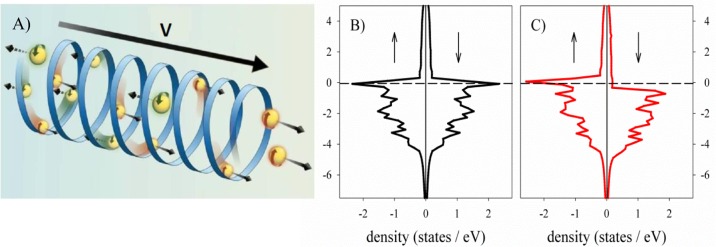Figure 1.
(A) Schematic illustration of the CISS effect. Electron transmission through a chiral potential depends on their spin. The linear momenta of the electrons are coupled to their spins, and therefore electrons moving from left to right have the opposite spin than those moving from right to left. In this example, the spin is antiparallel to the electrons’ velocity. (B, C) Energy vs density of states (DOS), spin polarized plane wave GGA (generalized-gradient approximation) calculation for nickel (fcc). PAW (pseudo augmented-wave) PBE (Perdew–Burke–Ernzerhof) potential, energy cutoff 270 eV (VASP code).40 The dashed line indicates the Fermi level. (B) No magnetic moment and (C) collinear magnetic moment applied. Note that, for the magnetized substrate, the density of spin states (“UP” ↑ and “DOWN” ↓ arrows) near the Fermi levels are different.

